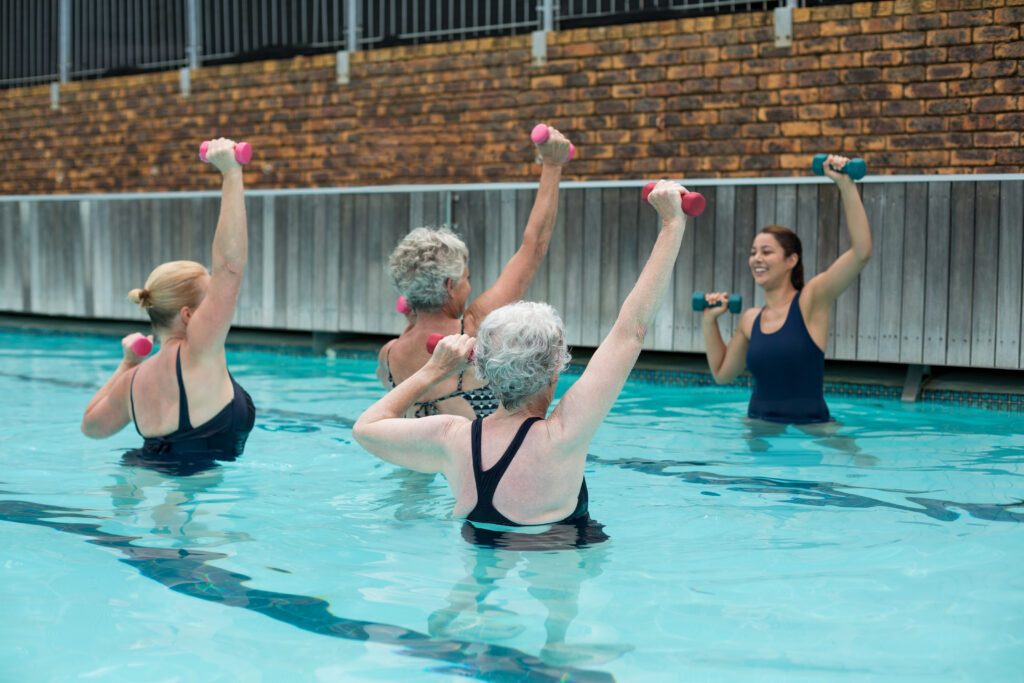
Regular physical exercise reduces cancer risk. In many cancers such as colon cancer, breast cancer, endometrial cancer, myeloma, liver cancer, and kidney cancer, the relationship of physical exercise with protection against cancer is dose-dependent. The more someone exercises (longer duration or increased intensity of exercise), the lesser their chances of developing these cancers. The relationship between exercise and breast and colon cancers is remarkably strong, and every little bit of additional time spent on exercise or increased vigorousness of exercise decreases the risk of getting these cancers.
In this article, we explore the many ways through which exercise reduces cancer risk and learn how much exercise is needed to confer these lifesaving benefits.
1. Exercise helps regulate weight
Being overweight or obese is a strong risk factor that contributes to the development of various cancers. In the US, being overweight or obese is estimated to be an important factor in 14% to 20%of cancer-related deaths. According to the International Agency for Research on Cancer (IARC), a sedentary lifestyle (lack of exercise) and obesity are responsible for 25% of all cancer cases worldwide.
One of the reasons why being overweight or obese can cause cancer is that body fat is not an inert entity. Body fat, also called the adipose tissue, generates and secretes a variety of signaling molecules such as leptin which are pro-inflammatory. Pro-inflammatory molecules increase the level of systemic inflammation in the body. Such low-level chronic inflammation is understood to play a role in the development of many types of malignancies.
These cancers have a known association with being overweight or obese: post-menopause breast cancer, colon cancer, endometrial cancer, ovarian cancer, thyroid cancer, kidney cancer, stomach cancer, liver cancer, esophagus cancer, meningioma, and multiple myeloma.
These cancers may have an association with being overweight or obese: male breast cancer, non-Hodgkin lymphoma, prostate cancer, and pancreatic cancer.
Exercising reduces the fat deposits therefore reducing chronic inflammation. Also, during exercise, the skeletal muscle cells produce anti-inflammatory signaling molecules, which further help counteract the existing obesity-induced inflammation.
2. Exercise helps regulate hormones
Exercise is known to influence sex hormones. In one study, over 400 women 50 to 75 years of age who were either overweight or obese and had a sedentary lifestyle were recruited. The women were assigned to different groups and engaged in different routines ranging from diet only to vigorous physical exercise. It was noted that the women who performed exercise had a significant reduction in estrogen levels and an increase in proteins that control estrogen levels in the body.
Since it is known that abnormal hormonal levels can contribute to the development of some cancers, it may be inferred that one of the ways exercise helps reduce the risk of cancer is by helping the body better regulate its hormone levels.
Exercise also has a connection to developing better insulin resistance, which can help with weight management and better outcomes including lower risk of cancer.
3. Exercise affects immune function
Regular exercise enhances immunity in several ways. It may increase the number and activity level of the immune cells that fight diseases including cancer. It can also increase the capacity of the body to reduce oxidative stress. Oxidative stress also contributes to the progression of various cancers.
4. Exercise affects the diversity of gut microbiota
Exercise increases the diversity of the microorganisms that live inside our gut. These microbes affect a variety of processes from digestion to mental health. The microbiome inside the gut also affects the risk of developing several cancers, particularly the ones in the gastrointestinal tract.
5. Exercise helps reduce sitting time
Sitting time, or sedentary time is the time when someone is not sleeping but is at rest. They are performing activities such as reading, writing, typing, etc. that consume only baseline levels of metabolic energy that score less than 1.5 MET.
Sedentary time is associated with obesity, type 2 diabetes, and cardiovascular disease. Sedentary time is also linked with cancer, though the results are mixed.
In a study conducted in Japan with people who worked a desk job, the long hours of occupational sitting were associated with pancreatic cancer in men and lung cancer in women. In Norway, a sedentary lifestyle appeared to be associated with lung, colorectal, and prostate cancer in men but not in women.

Exercise has benefits for those who already have cancer
In those who have breast or colon cancer, vigorous physical exercise was seen to slow down the progression of cancer, reduce its chances of recurrence, and improve survival rates. These benefits were observed in patients engaging in vigorous exercise, measured at 6 METs or more.
A MET is a score of energy a person expends. The MET score during rest is 1, which represents the baseline metabolic rate of that person. Activities with a MET score of 1 include sitting, writing, studying, reading, and typing. MET score is 6 when a person’s metabolic rate during a particular activity is 6 times the metabolic rate at rest. Examples of exercises that are 6 METS or more include swimming laps (MET=6), bicycling 12-14 mph (MET=8), singles tennis (MET =8), and running (MET=11).
While vigorous exercise is best, any exercise is beneficial and benefits have been reported from single exercise sessions in women who were undergoing chemotherapy for breast cancer. In these patients, even a single exercise session focused on resistance and endurance training within a week of receiving chemotherapy helped them feel better and helped dissipate some of the side effects of chemotherapy such as nausea and stress.
How much exercise do I need?
The American Cancer Society recommends that:
- Individuals should maintain a healthy weight throughout their life.
- Avoid weight gain in adult life.
- Make good dietary choices, and limit alcohol consumption
- Adults should have 150-300 minutes of moderate-intensity or 75-150 minutes of vigorous-intensity activity every week. It is ideal to reach or exceed 300 minutes of exercise every week.
- Children and teens should have at least 60 minutes of moderate or vigorous-intensity activity every day.
Following the ACS recommendations can be lifesaving. A large study was conducted with 476,396 adults who were aged 50-71 years at the beginning of the study. These adults did not have a previous history of cancer. The researchers followed their health and fitness for a median of 10.5 years for incidence of cancer, 12.6 years for mortality resulting from cancer, and 13.6 years for all-cause mortality (mortality for any reason). The study showed that adults who followed the ACS guidelines had a lower risk of developing cancer and consequently a lower risk of cancer-related mortality as well as all-cause mortality.

Be cautious when starting a new exercise
If you have not exercised in a while, start slow and gradually increase the vigorousness of the exercise.
If you have preexisting health conditions, it may be best to consult with your physician or physical therapist before starting a new workout routine.
This is particularly important if you have other conditions such as arthritis that limit your mobility.
The information provided in our blog posts is for informational purposes only and is not intended as a substitute for professional medical advice, diagnosis, or treatment. Always seek the advice of your physician or other qualified health provider with any questions you may have regarding a medical condition. Never disregard professional medical advice or delay in seeking it because of something you have read on this blog.






